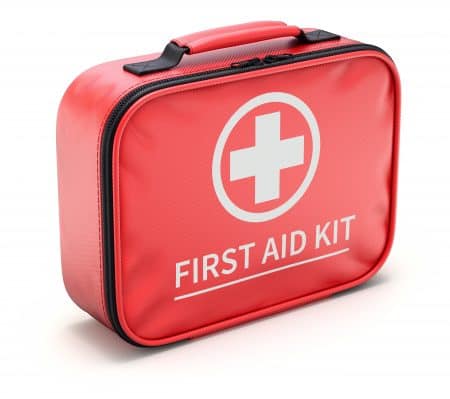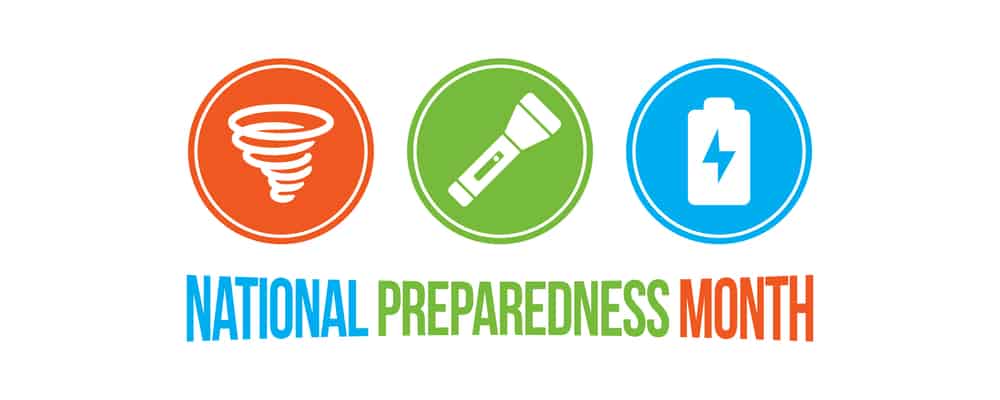If you are like millions of animal owners nationwide, your pet is an important member of your household. The likelihood that you and your animals will survive an emergency such as a fire or flood, tornado or hurricane depends largely on emergency planning done today. Some of the things you can do to prepare for the unexpected, such as assembling an animal emergency supply kit and developing a pet care buddy system, are the same for any emergency. Whether you decide to stay put in an emergency or evacuate to a safer location, you will need to make plans in advance for your pets. Keep in mind that what is best for you is typically, what is best for your animals.
Just as you do with your family’s emergency supply kit, think first about the basics for survival, particularly food and water. Consider two kits. In one, put everything you and your pets will need to stay where you are. The other should be a lightweight, smaller version you can take with you if you and your pets have to get away. In addition, be sure to review your kits regularly to ensure that their contents, especially foods and medicines, are fresh.
Food- Keep at least three days of food in an airtight, waterproof container.
Water- Store at least three days of water specifically for your pets in addition to water you need for yourself and your family.
Medicines and medical records- Keep an extra supply of medicines your pet takes on a regular basis in a waterproof container.
First aid kit- Talk to your veterinarian about what is most appropriate for your pet’s emergency medical needs. Most kits should include gauze bandage rolls, adhesive tape and scissors; antibiotic ointment; flea and tick prevention; latex gloves, isopropyl alcohol and saline eye wash 
Collar with ID tag, harness or leash- Your pet should wear a collar with its license tag and identification at all times. Include a backup leash, collar and ID tag in your pet’s emergency supply kit. In addition, place copies of your pet’s registration information, adoption papers, vaccination documents and medical records in a clean plastic bag or waterproof container and add them to your kit. You should also consider talking with your veterinarian about permanent identification such as microchipping, and enrolling your pet in a recovery database.
Crate or other pet carrier- If you need to evacuate in an emergency take your pets and animals with you provided that it is practical to do so. In many cases, your ability to do so will be aided by having a sturdy, safe, comfortable crate or carrier ready for transporting your pet. The carrier should be large enough for your pet to stand up, turn around and lie down.
Sanitation- Include pet litter and litter box if appropriate, newspapers or training pads, paper towels, plastic trash bags and household chlorine bleach to provide for your pet’s sanitation needs. You can use bleach as a disinfectant (dilute nine parts water to one part bleach), or in an emergency you can also use it to purify water. Use 16 drops of regular household liquid bleach per gallon of water. Do not use scented or color safe bleaches, or those with added cleaners.
Familiar items- Put favorite toys, treats or bedding in your kit. Familiar items can help reduce stress for your pet.
A picture of you and your pet together- If you become separated from your pet during an emergency, a picture of you and your pet together will help you document ownership and allow others to assist you in identifying your pet. Include detailed information about species, breed, age, sex, color and distinguishing characteristics.
Be prepared to assess the situation- Use whatever you have on hand to take care of yourself and ensure your pet’s safety during an emergency. Depending on your circumstances and the nature of the emergency, the first important decision is whether you stay put or get away. You should understand and plan for both possibilities. Use common sense and the information you are hearing to determine if there is immediate danger. In any emergency, local authorities may or may not immediately be able to provide information on what is happening and what you should do. However, watch TV, listen to the radio or check the Internet for instructions. If you are specifically told to evacuate, shelter-in-place or seek medical treatment, do so immediately.
Preparing for Your Pets Makes Sense. Get Ready Now.
